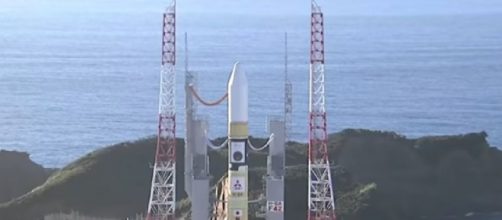Mars had until now been the goal of the United States and China, but now the United Arab Emirates has joined them. America already has its robots Curiosity and InSight on the red planet, while China's first Mars mission Tianwen-1 took off in July. Obviously, there is a focus on areas like renewable energy, robotics, and artificial intelligence. The American robot Curiosity has been on Mars working 24X7 for more than five years since 2012. InSight joined in 2018. The former is exploring the surface while the latter is concentrating on areas below ground level.
There is a general feeling that life existed on the planet, and efforts are to uncover evidence. The interest of all countries is probably to identify useful natural resources on the red planet. The UAE has joined their ranks, and its spacecraft "Hope" will arrive in orbit around the Red Planet in 2021. It would study the atmosphere and weather of the red planet, but scientists tracking the path of "Hope" want to add some more tasks before it reaches Mars. In the words of an official associated with the project, one of the mission's broad objectives is to add value. She is Hessa Al Matroushi, the Hope mission's deputy project manager for science.
Space.com adds that scientists and managers associated with "Hope" are encouraged by how the spacecraft has handled itself until now.
It has to cover hundreds of thousands of miles, and it has successfully accomplished a few maneuvers with accuracy. The mission plans to go ahead with additional tasks before early January. That is when the focus would shift to the complexity associated with its safe arrival at the destination.
The growing interest in Mars
As a part of its extra observations, "Hope" could team up with BepiColombo.
This is a joint mission of Japan and Europe to visit Mercury that launched in 2018. It is on a seven-year mission. Space.com explains both the probes would measure the amount of hydrogen in the stretch of space between them. "Hope" is keen to explore this aspect because of interplanetary hydrogen in the solar system. The UAE mission would like to differentiate between interplanetary hydrogen and hydrogen from Mars.
This would be possible when its spacecraft comes closer to the planet.
Interplanetary dust on Mars is another subject
There is a navigational tool in "Hope." It is a built-in feature of the spacecraft rather than a science instrument. Space.com adds that this facility could track interplanetary dust. As an official of the mission explains, the mission objective is data collection. "Hope" wants to gather a whole lot of data to enable the global scientific community to reap the benefits. A report in June 2016 mentioned that with a mission to Mars, the United Arab Emirates was turning its attention from an oil to a knowledge-based economy.
The UAE launched its spacecraft from Japan
According to CNN, the United Arab Emirates launched the Mars-bound "Hope" from the Tanegashima Space Center in Japan.
It is a new entrant to undertake a Mars mission and became the first interplanetary mission for the Arab world when it launched "Hope." The probe would collect data about the red planet's atmosphere and remain in orbit for a Martian year. This is equivalent to 687 days on Earth. Incidentally, the United States and China are also embarking on Mars missions this summer. All of them want to take advantage of a biennial window when Earth and Mars are closest together. The UAE launched satellites in 2008, and 2013 partnered by South Korea and established its space agency in 2014. Its long-term plan is to colonize Mars by 2117.


